Bavaria – now and then! 50 years later
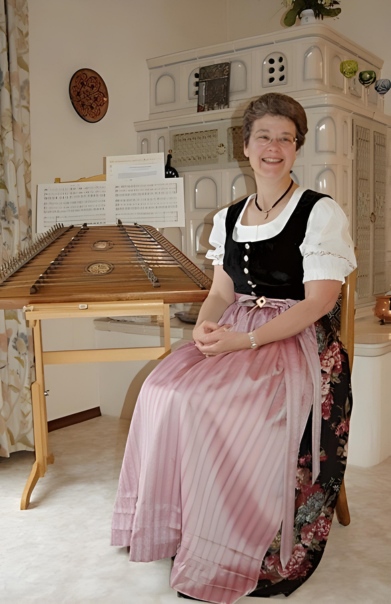 Margie Gibson (JYM 1971-72) reflects on Bavarian culture as it was when she first arrived as a twenty-year-old for her junior year and as it is now 50 years later as a permanent resident of this beautiful Freistaat.
Margie Gibson (JYM 1971-72) reflects on Bavarian culture as it was when she first arrived as a twenty-year-old for her junior year and as it is now 50 years later as a permanent resident of this beautiful Freistaat.
For some reason, I was asked to write some thoughts about my junior year in Munich for the alumni magazine. Me? Why me?? On reflection, I decided it must have something to do with 50 years having passed since my junior year. I'm not sure how those intervening years disappeared, but I do know I expended a lot of thought on how I could get back to Munich.
1 September 1971
A day to remember: the day I left for Germany. I remember waking up in the bedroom of the home I grew up in outside of St. Louis. I remember my Mom fixed breakfast, bacon and eggs. I got dressed, but then the day ran a very different course from any that had come before. Dad, normally at work by that time, had taken the day off in honor of the occasion.
He brought the car to the front of the house and we lifted my suitcases into the trunk. I took a last look at our house, the huge pine tree at its side and then we drove down the hill and around the corner. I wouldn't see that home again for almost a year. I checked in at the TWA desk at Lambert Airport. Mom and Dad walked me to the boarding area-that was still possible back then. The flight started boarding, I kissed Mom and Dad goodbye and walked out of sight. My eyes were blurred with tears, but in my heart, I knew my adventure had begun.
The plane flew to Washington, DC. I had an hour or so layover for the flight to Boston and I spent it on the phone-a coin-fed payphone attached to the wall. I called the office of Senator Thomas F. Eagleton-where I had interned the previous year and throughout the summer-and said my last goodbyes to all the people I had worked with and come to think of as family. By then, it was time to board the plane for Boston. I busied myself with a book "The Chosen" by Chaim Potok. That book saw me through the first days of my arrival in Germany.
In Boston, I found the rest of the JYM group and had my first look at my classmates. Then we boarded an Air France (Air Chance we called it) flight to Frankfurt. Dinner appeared and along with it a liberal amount of wine. I began to realize how civilized this all was, and was especially thankful for the wine when we hit turbulence shortly after.
Germany! Bad Mergentheim and Munich

I even remember landing in Frankfurt, descending the plane's steps and putting my foot on German soil. I was the first person in my family to stand on German soil since my grandmother and her parents had visited in 1912.
I knew I had just left my home, but still, I had the strange sense of having come home. Frau Doktor Riegler met us as we left the plane and shepherded us onto the bus to Bad Mergentheim – a weary lot of straggly students, by this time probably all feeling a bit uncertain and more than a bit jetlagged. In Bad Mergentheim, we were assigned rooms and left our luggage.
I headed out and remember spending a good portion of the next few days in the Kurpark, surrounded by flower gardens and reading "The Chosen." My dinner that first evening was Ochsenbraten, which seemed terribly exotic. I didn't realize until decades later that an ox was simply a castrated bull.
Finally, the day came when we piled onto another bus and arrived in Munich. Again, the suitcases were stashed in our rooms at Studentenstadt Freimann, I met my roommate and then headed into Schwabing to see where one of my new friends was going to live. This was just a month or two before the U6 was extended to Freimann, so I had to take the bus (or maybe it was a streetcar) to Münchner Freiheit and then back again rather late at night to Studentenstadt.
Here's where things almost got out of hand. I remembered my room was on the fifth floor in one of the two tall buildings-but which one? I was pretty sure I was in the first building I came to, so I entered and went up to my room. My key protested a bit as I turned it in the lock, but with a bit of jiggling, the door opened. I entered without turning on the light because I didn't want to wake my new roommate, tossed my sweater and purse on the bed and began to get ready to settle in. Until a male voice boomed (in English) from the bed, "What are you doing in here?"
I sputtered and went on the offensive. "What are youuu doing in my bed?" I shot back.

Uh, well, turned out this wasn't my room after all. I finally recovered a shred of dignity, left the room and went off to try the second tall apartment building. Luckily the bed was unoccupied and I was home. I thought that was the end of that story until I recounted the experience in the Aufenthaltszimmer at the JYM offices. Ted, a fellow JYMer, was sitting near me and heard the whole thing. He started laughing. "That was me! You walked into my room and scared the life out of me," he said.
So many other memories flit across my mind: watching the opening parade of Oktoberfest near Marienplatz, where one of my friends, Kathy Braeuner, met her future husband. Singing "Roll Out the Barrel" with Johnny Lawson and Cheryl Parham on the Residenz steps at one of the Fasching parades. And traveling around Europe during semester break. My parents had given me a Eurail pass and I wandered from Munich to Vienna, Budapest, Berlin, Moscow, Leningrad, Bern, Geneva, Lyon, Paris, Brussels and London. By the time I returned to Munich for my second semester, I knew I could do anything.
Munich 1971 and now
In the years since 1971, much has changed in Germany. Funny, but the first thing that comes to mind are bathrooms and kitchens, which have become showpieces. The old toilet tanks with chains that hung over the toilets in stuffy, tiny water closets have long since been replaced by toilets with tanks hidden inside the wall. WCs have been expanded into spacious bathrooms. In kitchens, the movable burners and the Gasanzünder have disappeared, replaced with sleek cabinets and induction and electric stoves. Refrigerators are still small, though and the freezer space does not support an ice cream habit.
Clunky elevators with those folding inner doors and outer doors that must be manually closed were replaced by modern elevators, except in the few places where the elevator is an antique gilded cage that ascends majestically in an open shaft to upper floors.
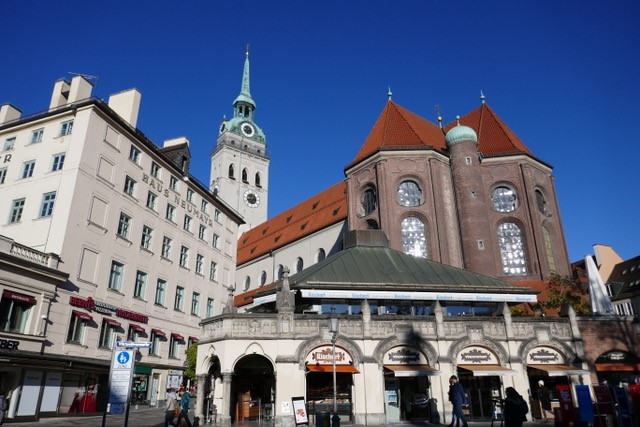
I don't think I was able to enter the Frauenkirche until a trip back to Munich in the 1990s. The cathedral was shrouded in scaffolding the entire year I was in Munich.
So instead of the Frauenkirche, I gawked at the ornate white interior of Odeonskirche and had a major Schreck the first time I came across the reliquary of St. Mundita, a Third Century martyred resident of Rome who was removed from the Catacombs and given to Alter Peter in the 17th Century. Her gilded skeleton studded with gemstones, her rotted teeth hidden by jewels, she has rested in her glass sarcophagus ever since. I assure you, she has not changed one bit.
Other things have also remained much the same-for example, the Munich U-Bahn scent. It doesn't smell bad, it's just there-perhaps a slight mechanical scent that wafts through the air. Whenever I descend to the train platforms, the scent hits my nostrils and my mind is back in 1971. As far as the trains go, sleek, new cars have replaced many of the original ones and "Vorsicht! Die Türen werden geschlossen" has morphed a bit, but there's still a warning before the doors slam shut.
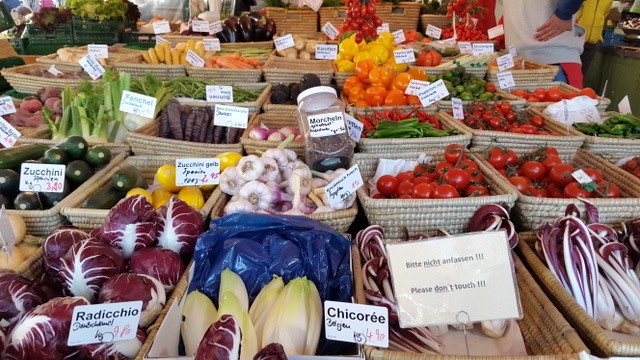
The Viktualienmarkt has not changed too much either. There is talk of a major restoration, which worries me. They wouldn't alter the character of this classic market, would they? When I was a student, after my last class on Friday, I would hop on the U-Bahn to Marienplatz and wander through Viktualienmarkt. I was just beginning to cook then, but I already knew I was looking at some of Europe's most exquisite foods displayed with the kind of artistry usually reserved for Tiffany's. (The same could be said for Dallmayr).
When my mouth was watering and my stomach complaining of starvation, I would walk back to Marienplatz and descend the steps into the Rathskeller for lunch-I usually ordered Bratwurst or Wollwurst and Sauerkraut, which was compatible with a student's budget. I'd splurge on a pretzel, which was always placed on your table-but unlike custom in the U.S., you had to pay extra to sink your teeth into the crisp-crusted chestnut-brown Brezen. It goes without saying that I'd order a beer too, but the beer was a Helles-my now-favorite Weissbier was still a historic beer and not very common in the pantheon of Munich beers.
In the years since, the Rathskeller has changed but it is still one of my favorite places to eat in Munich. The vast underground space has been divided into smaller dining areas. New tables, inlaid with colored woods depicting clusters of grapes, leaves and vines, have replaced plainer tables. The food theme focuses on Franken-the menu offers favorite meals from central and northern Bavaria and the wine menu relies heavily on Würzburg's vineyards.
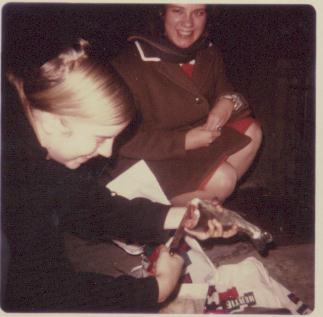
I enjoyed German food as a student and was always happy to put away a hearty Jägerschnitzel or Sauerbraten. Or on the Fridays I didn't go to Viktualienmarkt, I loved to order a main-portion-sized hunk of Apfelstrudel served on Rosenthal china at a Konditorei. Those traditional choices are still very much available, but in general German food has been influenced by other European cuisines as well as by Asian cuisines.
German chefs are not afraid to mix and match flavors or to try new techniques. The choice of ethnic restaurants has changed in the 1970s, Balkan food was popular and cheap. We spent quite a few evenings eating cevapi and downing glasses of decent, very reasonably-priced red wine. Now, you are more likely to find doner kebabs and other Middle Eastern foods.
And Middle Eastern foods bring me to what I think is the biggest change in Germany today compared to 1971: the transition of immigrant groups. In 1971, foreign workers were very much in evidence in Munich. In an effort to rebuild Germany after World War II, the government relied heavily on attracting workers (primarily men) from Mediterranean countries, Italy, the countries on the Balkan peninsula, Greece, Turkey and North Africa. I remember walking past the construction area at Studentenstadt and hoping I could get by without attracting too much attention.
The original intention was that these workers would return home after the post-war reconstruction was completed. Many, however, eventually brought their families to Germany and stayed, becoming a part of the fabric of German society. More recently, free movement within the European Union has brought almost five million people to Germany; another four and a half million come from non-EU countries in Europe. Immigrants from Africa and Asia, many of whom arrived as refugees beginning in 2015, add another three million foreign citizens. Those numbers add up to a significant chunk of Germany's total population of 83 million.
Immigration and integration have not been an easy process. The government directed major funds to the integration of refugees. Finding housing, providing German lessons, as well as medical and psychological care required much organization and generated a fair amount of ongoing debate. But the reality is that Germany is very much a country of immigration.
How will it all turn out? I don't know. But on practical grounds, I think the immigrants help make us all a bit more flexible and more open to new ideas. Their presence certainly makes it easier to find once-exotic ingredients for cooking. And the restaurant selection has expanded to include so many more choices.
This past week, however, I realized the immigrant contribution has gone far beyond food. I came face to face with this during a visit to the dentist. My former dentist retired about a year ago, but I liked the new dentist, who I thought might be from Italy. He recommended that the geologic-sized erosions on my teeth near the gum line be repaired. In early November, I went in to have the work done. Just to make conversation, I asked where he studied dentistry, fully expecting him to say Munich. Instead, he said something I didn't understand. I thought perhaps he had said, Turin. "Where?", I asked again and got the same answer. Finally, he laughed at my puzzled expression and said, "Syria", in English.
My jaw dropped. I had already figured out the dental assistant was not German. I could hear his accent and his dark complexion and curly hair were not local. He was from Afghanistan.
Both came here six years ago as refugees. The dentist had already completed his studies in Damascus, but after he arrived, he had to learn German and then qualify to practice under German regulations. He did it – German and all-and six years later is again practicing dentistry.
I have so much respect for those two men. They experienced the horrors of leaving their homes and everyone they loved, but with the help of the German government, they picked up the pieces and are already contributing to their new country. I am so proud of these men and of Germany for having the foresight to provide refuge and assistance.
So, I would say that changes have certainly occurred in Germany over the last 50 years. Communications have brought everything closer-in 1972 I wrote reams of letters to my parents and phone calls were impossible. Today, thanks to the internet, I rely on telephone calls, email and Zoom.
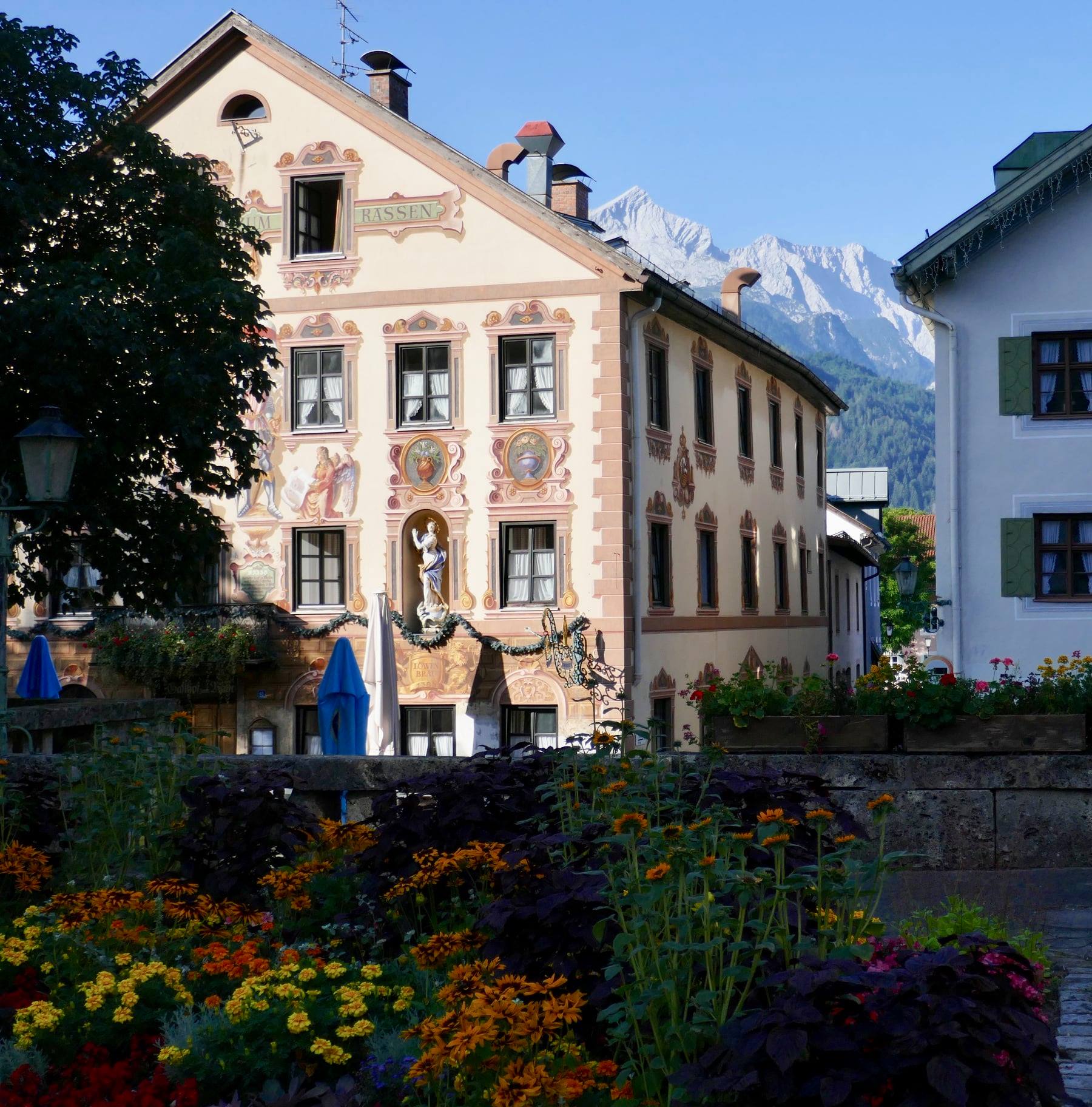
Germany is no longer recovering from a devastating war. Germans have spent a considerable time soul-searching and coming to terms with their history. People talk openly about the 1930s and 1940s now. That era is no longer the unacknowledged elephant in the room and still very much influences public thought and government policy. Yes, some problems need to be addressed in German society, but it seems that people have learned from the past and can move forward to address difficult issues.
And me? The kid who after her junior year just wanted to get back to Germany? In 2003, after working first for a US Congressman from Wisconsin and then for the Smithsonian National Zoo, I took a job as an editor for the Marshall Center in Garmisch-Partenkirchen. I managed to retire as soon as I could and get on with enjoying my life in Partenkirchen, which might not be Munich but is still pretty darn close to perfect.